
The high cost of original solutions, obviously, is due to the manufacturer's desire to compensate for the labor costs for the development and production of highly specialized devices that are not aimed at a wide audience of users. This article will tell you how expedient it is for a user who needs a sufficiently functional device, but who cannot afford it due to the high price, to look for an alternative in the form of a cheaper copy of the original device.
To begin with, I would like to tell you about the basic principles of stage lighting complexes.
For those who know what DMX512, ArtNet sACN, etc. are. this part of the article can be omitted.
The basics
So, the basis of the entire light control system is the DMX512 protocol .
The DMX512 data transmission protocol was developed in 1986 as a means of controlling smart lighting devices from various control panels (consoles) through a single interface, allowing you to combine various control devices with all kinds of terminal devices (dimmers, spotlights, strobe lights, smoke machines, etc.) ) from different manufacturers. It is based on the industry standard RS-485 interface, which is used for computer control of industrial controllers, robots and automated machine tools. For data transmission, a cable with two intertwined wires in a common screen is used.
The DMX512 standard allows you to control 512 channels simultaneously via one communication line (one device can sometimes use several tens of channels). Several devices working simultaneously, supporting DMX512, allow you to create light pictures and decoration elements of the most varied complexity, both indoors and outdoors. One device parameter is transmitted over one channel, for example, what color to paint the beam, which pattern (gobo-stencil) to choose, or to what angle to rotate the mirror horizontally at the moment, that is, where the beam will hit. Each device has a certain number of parameters that can be controlled and occupies the corresponding number of channels in the DMX512 space. Each parameter can take values from 0 to 255 (8 bits or 1 byte).
The following image shows a typical wiring diagram for devices:
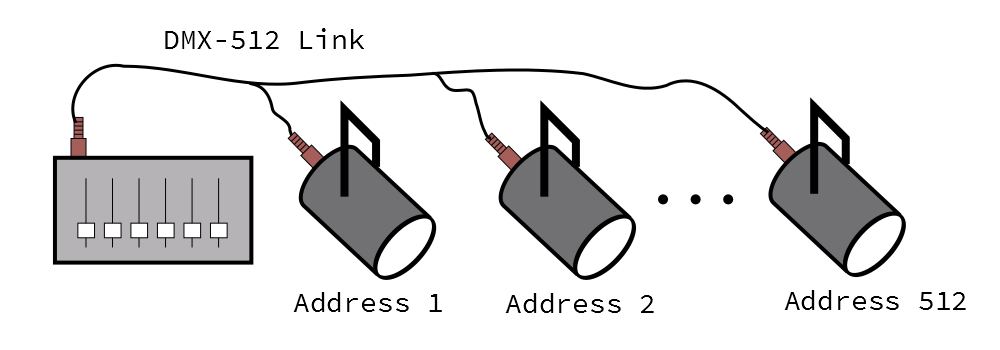
You can read more about the principles of the protocol in the article listed below in the sources.
The DMX512 protocol has several advantages and disadvantages, but it is now the main standard for most lighting systems.
Before the advent of a single digital protocol, control was carried out via separate wires with a control voltage going to each device, or using a variety of digital and analog connections.
For example, the analog interface "0-10 volts" has become widespread, through which one cable was pulled to each device. The system was successfully used with a small number of instruments, but with an increase in their number, it turned out to be too cumbersome and inconvenient, both in construction and in management and troubleshooting. This and other analog systems were unnecessarily complex, expensive, and lacking a single standard.
They required special adapters, as well as amplifiers and voltage inverters, in order to connect lighting fixtures from one manufacturer to the control panels of another.
Digital systems also did not differ in universality, they were incompatible with each other, and often used interfaces were hidden by developers. All this was a clear problem for the users of such systems, since they, choosing one system, were constrained by choosing all equipment from the same manufacturer, in accordance with the same standard.
The disadvantages of the DMX512 protocol are:
- .
, (.. ), , ., : , , , DMX , ‘’ . (, ..). . - .
32 DMX 512. , , , DMX . , «» DMX . DMX Terminator. DMX ~120. -
, .
, .
:
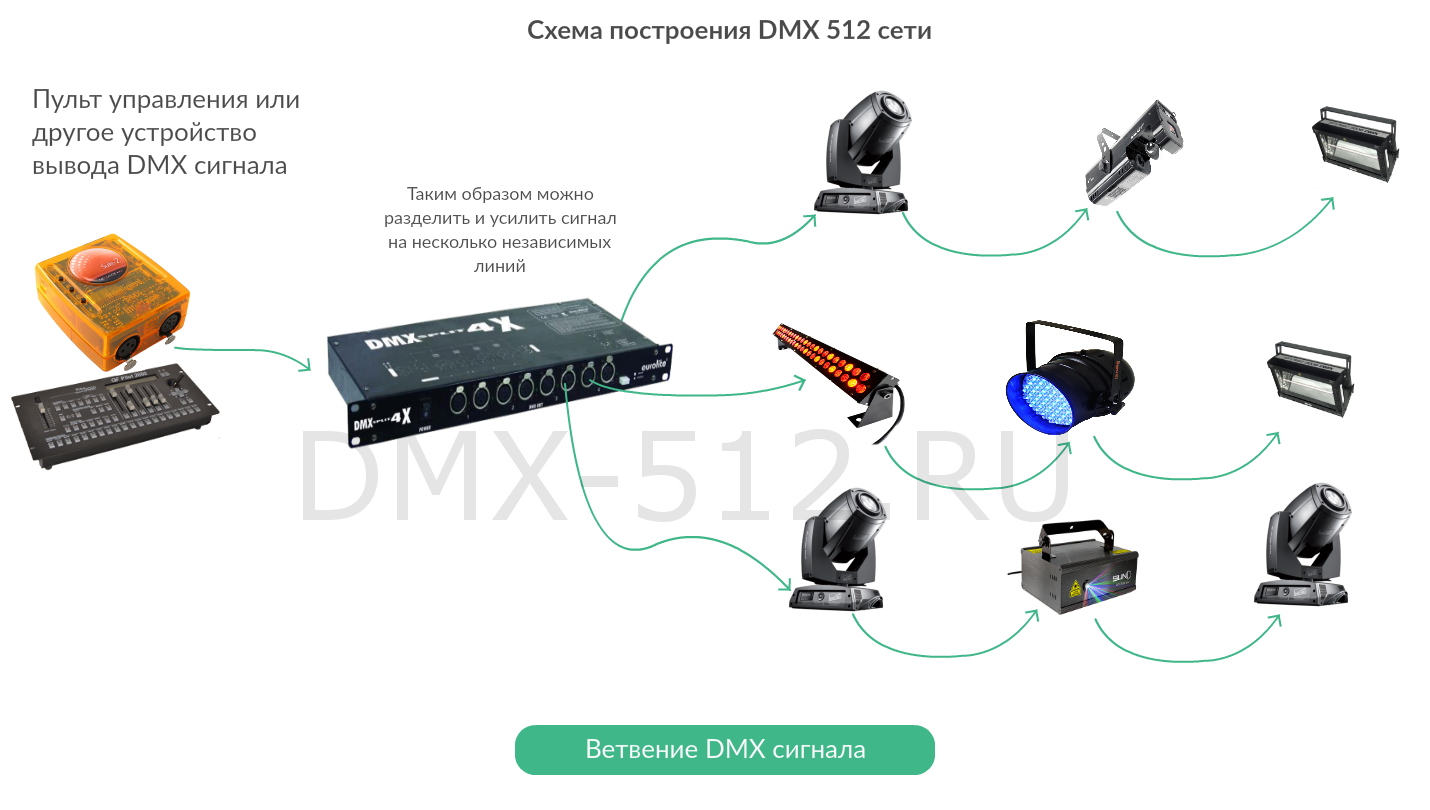
- .
, . ( ). ( ). , , , . USB , . — , , , optoisolators.
There are also dmx wireless signal transmitters. One transmitter can broadcast 512 channels, the same as one wire line. At the same time, in theory, an unlimited number of receivers can be programmed to receive a signal from one transmitter. Wireless devices transmit signals at frequencies similar to Wi-Fi in the 2.4GHz band. They are at the initial stage of their development, because due to the small range and a large number of complaints about unstable operation (possibly due to the congestion of the 2.4GHz radio channel), these devices have become widespread only in small installations used, for example, by DJs.
Art-Net Protocol
A further development of the protocol was the integration of DMX512 into the Art-Net network protocol.
Art-Net is a simple implementation of the DMX512 protocol over UDP, in which channel management information is transmitted in IP packets, usually over a local area network (LAN), using Ethernet technology. ArtNet is a closed loop protocol. As a rule, devices operating on ArtNet have a function of responding to received data. For example, the device has received data, and can send a response that it received them.
Artnet can transfer absolutely everything, up to files. Initially, Artnet can transmit values and positions of faders, coordinates of devices, and can also transmit timecode (address-time code - digital time data recorded and transmitted together with image or sound. It is used to synchronize various media systems - sound, video , light, etc.).
ArtNet devices use so-called Nodes to communicate with each other. The nodes can be Art-Net converters to physical DMX512, or lighting fixtures or equipment that already has a built-in Art-Net interface. Nodes can subscribe to (listen to) the server. At the same time the server can distribute packets both to all ArtNet nodes and to selected ones. The nodes are somewhat reminiscent of a social network, they can be subscribed to the server at the same time the server can ignore some nodes. A computer with lighting software or a light console can serve as an Art-Net server. The simplest way to implement the protocol is Broadcast, which works like a radio station. It broadcasts to all listeners and listeners can receive the signal or not.
Each space of 512 DMX channels in the Art-Net protocol is called Universe. Each node (device) can support a maximum of 1024 DMX channels (2 Universe) on one IP address. Every 16 Universe is combined into a subnet (Subnet - not to be confused with a subnet mask). A group of 16 subnets (256 Universe) forms a network (Net). The maximum number of networks is 128. The total number of nodes in the Art-Net protocol can reach 32768 units (256 Universe x 128 Net), each with 512 DMX channels.
Artnet addresses are usually used within 2.0.0.0/8, but they work without problems in regular local networks 192.168.1.0/255.
Advantages of Artnet:
- The ability to carry out signal transmission over the existing lines of the local network, as well as significantly increase the signal transmission range using inexpensive network equipment and sections up to 100m over unshielded twisted pair cable of the 5th category.
- One Art-Net line can transmit thousands of times more data than a physical DMX512 line.
- The Ethernet network has a star topology. This improves the reliability of the system compared to the “ring” or “feed-through” wiring used with DMX512.
- The ability to use wireless network equipment such as Wi-Fi routers, access points, etc.
Among the shortcomings, the following can be noted:
- The maximum cable run distance is approximately 100 meters compared to 300 meters for the DMX512 system. However, when you consider the lower cost of Ethernet switches compared to DMX512 taps, this problem can be neglected.
- More cable is required to achieve a star Ethernet network topology. However, due to the low cost of twisted pair and because Ethernet can carry much more data than DMX512, the savings still exist. Also, Ethernet star wiring will be more difficult when routing cables around the farm. The best solution is to take Ethernet from the console to the farm and then convert to DMX512.
A visual diagram of connecting devices using nodes:

Most major lighting control software manufacturers support the Art-Net protocol, allowing Ethernet to be used instead of physical DMX512 lines.
Now let's move on to the topic of the article - consoles, consoles and control interfaces for lighting devices manufactured by the Chinese.
Let's get acquainted with the basic terminology:
- Interface - a device that does not have its own controls and allows the output of control signals from the software running on a personal computer.
- — , , . , , .., , .
- — , . / - .
Sunlite Daslight
Included these interfaces in the list, as was directly related to their distribution.
These interfaces do not belong to consoles or consoles, as they have limited functionality and different logic of organizing the interface and controls.
The Daslight interface from Nicolaude in the maximum configuration allows the use of 3072 DMX channels, 1536 channels are output through the physical outputs on the interface itself. The other half can be output through the art-net interface.
Works under Windows and Mac. Currently in production, the last official version is dated 01/13/2020
The Sunlite Suite 2 FC + interface allows 1536 channels to be output through physical outputs and up to 60 Universe through art-net.
Works on Windows only. Currently officially discontinued and replaced with Sunlite Suite 3. The latest version of Sunlite Suite 2 software was released in 2019.
As for the prices, I will say that counterfeit is 7-8 times cheaper than the original. Considering the high cost of the original interfaces, the copies are quite a bargain.
Of the minuses of copies, one can note: the inability to update the software (in the case of sunlite, this is no longer possible), to purchase useful functions in the form of additional art-net universe, channels for standalone mode, etc.
The software is installed from the supplied disk, the software downloaded from the official site will not work.
When trying to update the software, problems may arise in the form of errors in determining the interface by the computer, so it is better to restrict access to the Internet for software in order to avoid problems. Of the several dozen interfaces sold, there were a couple of complaints from customers trying to use the original software. Once I got an interface with a factory defect, but it was replaced by the seller without any problems.
T1 interface
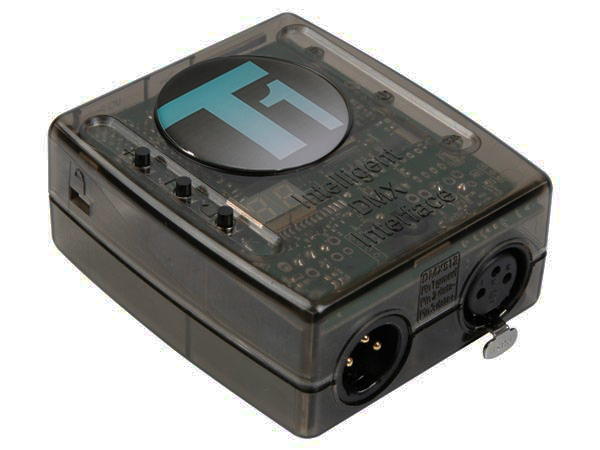
Simulates the Avolites T2 interface. Outwardly similar to Sunlite Suite 2 and Daslight. The seller claims that the interface performs the same functions as the original T2, namely, it allows outputting two DMX streams and fully using midi commands and LTC timecode.
It also comes with Titan software on a USB flash drive, software version 11. It is possible to use up to 32 T1 interfaces simultaneously.
Starting from version 12, you will need a special avokey key to use the software, so you should not expect updates from the Chinese in the near future.
The price is on average 3 times lower than the original.
Remotes and consoles Titan Mobile, Fader Wing, Quartz, Tiger Touch
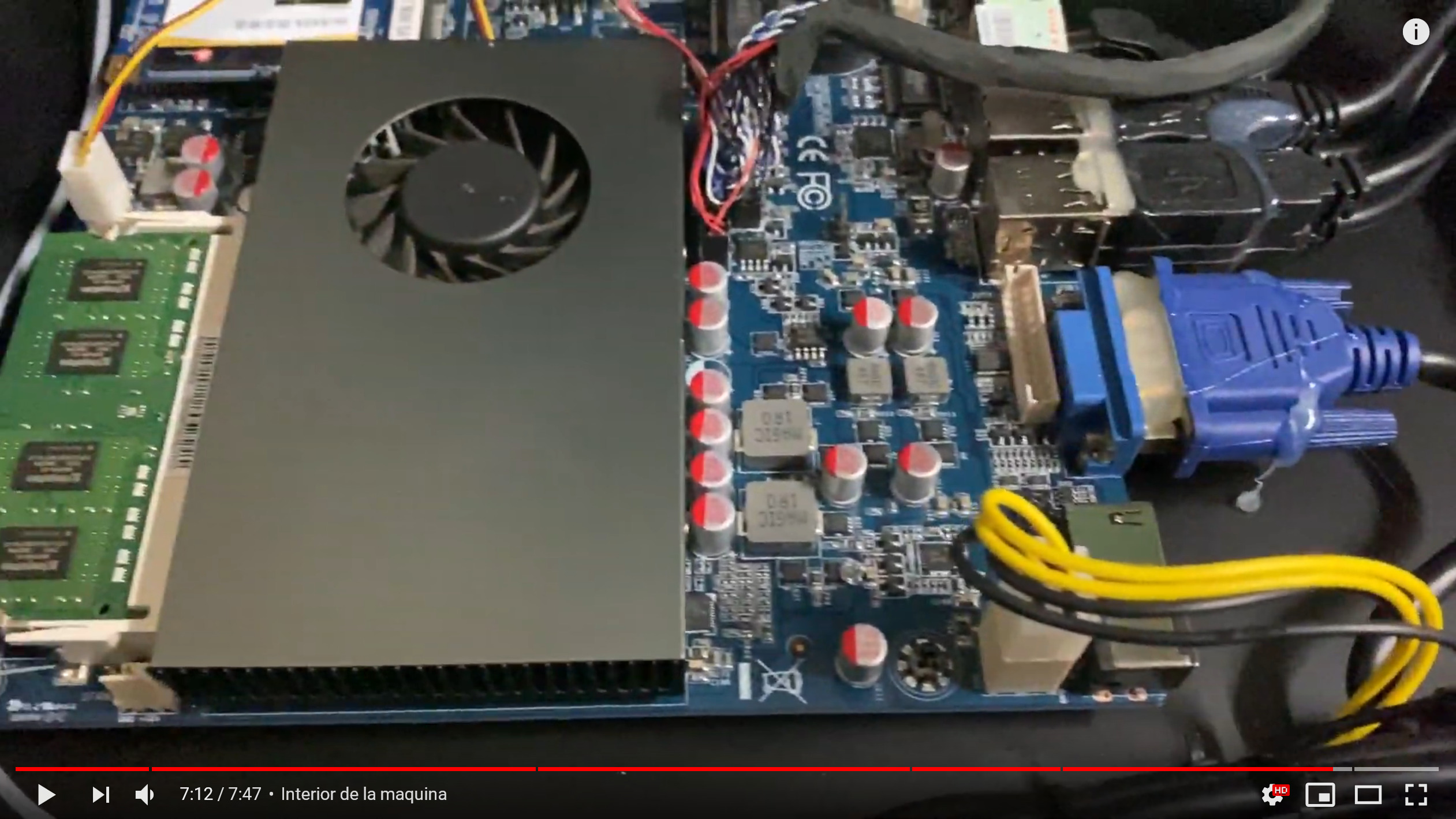
. PC , , ..
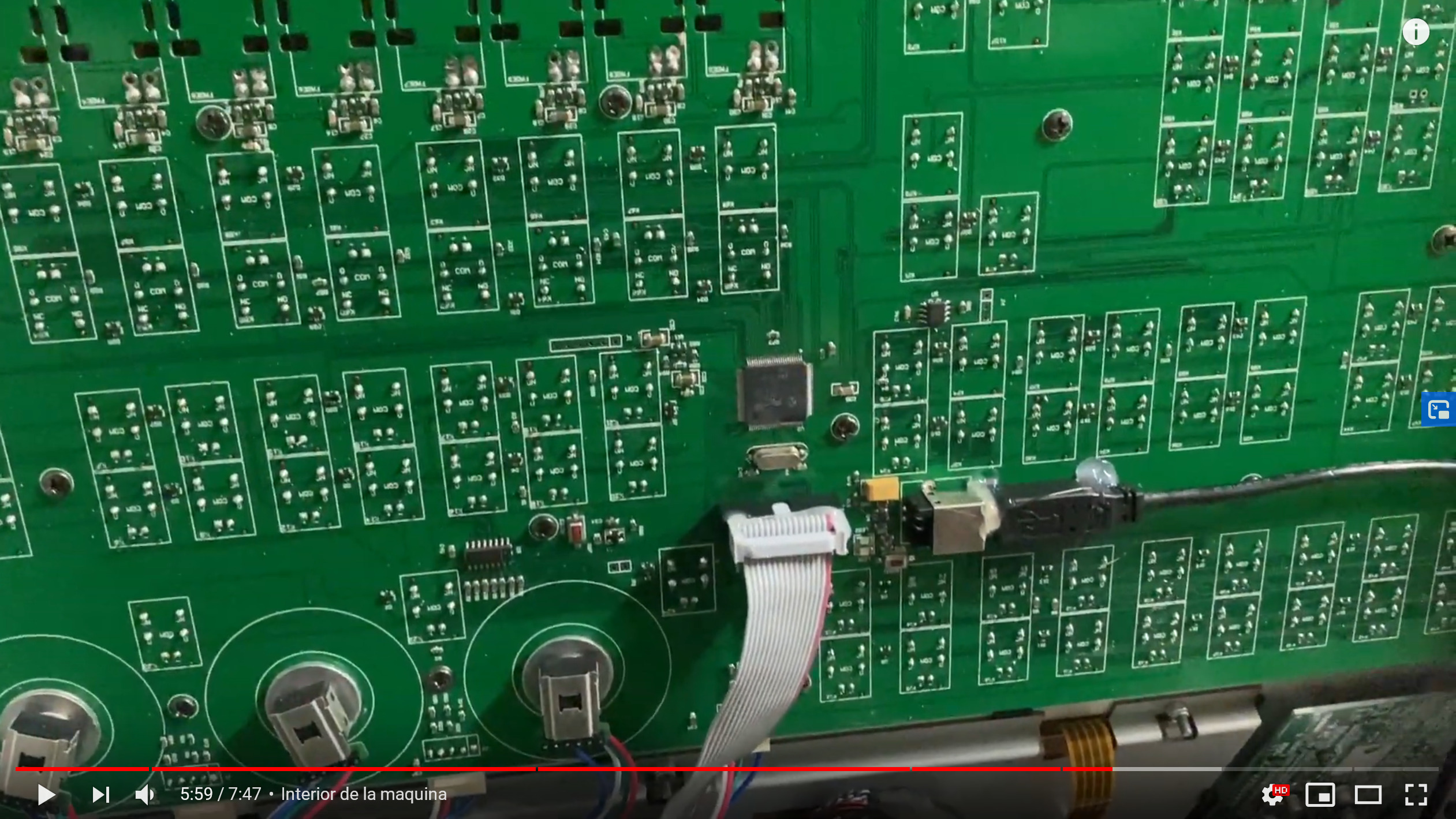
, USB , vga , .
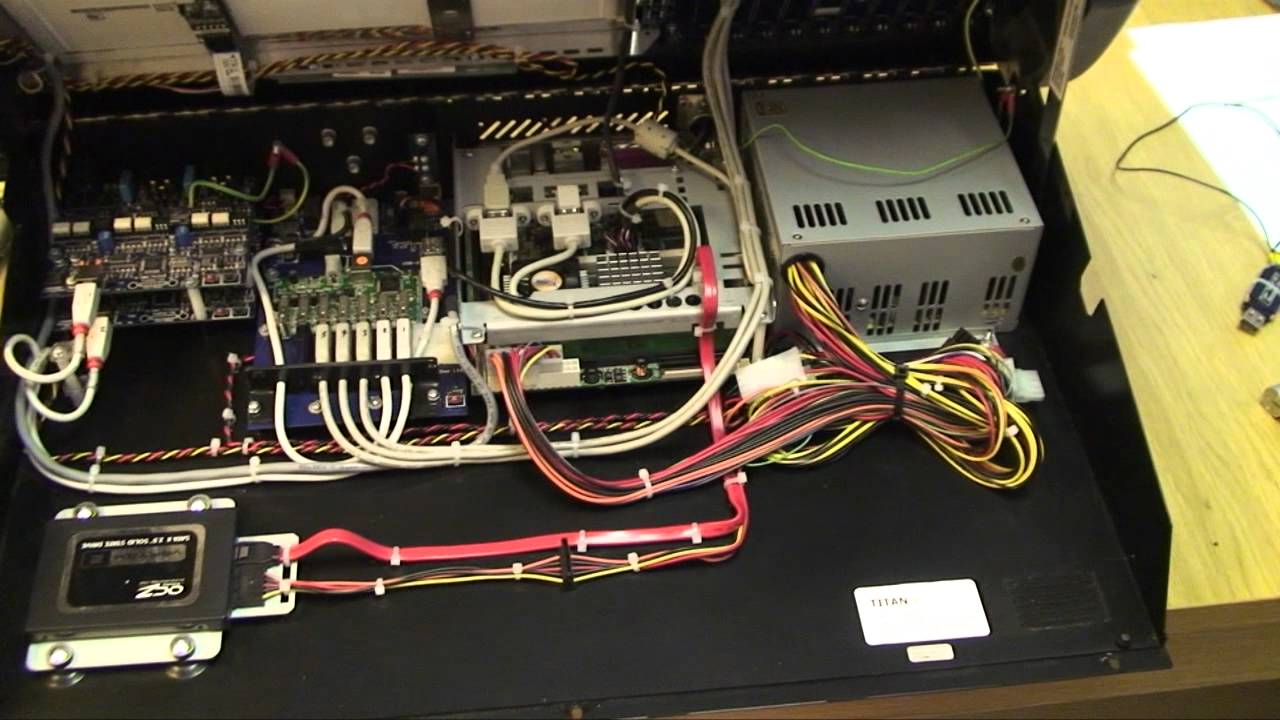
.
Reviews vary, for someone these copies have been working stably for many years, for someone the key has flown constantly. In general, how lucky.
If you buy it from reliable suppliers, according to reviews of friends.
Prices differ 3-5 times.
There are no complaints about the assembly of the Mobile and Fader Wing consoles, there is a drawback in the fact that cheaper components such as faders and encoders are used, so their resource is often lower than that of the original.
As with T1, due to the use of the avokey key, it will not work to update the software to version 12 and higher.
Consoles and consoles Grand MA2
Consoles are represented by copies of the MA2 Ultralite, Full, etc.
Here, in terms of the assembly, there is a picture similar to titan. The same usb extension cords and hot melt glue.
It is interesting that the Chinese produce unique devices that are not in the original manufacturer's park. These include the usb dmx expander interface, which connects to a computer via USB and allows you to use 4096 DMX parameters. Several times requests for testing with the latest version of the original software were confirmed successfully. Also, there have been no complaints from even a small number of buyers. Another interesting thing is the Boss console.

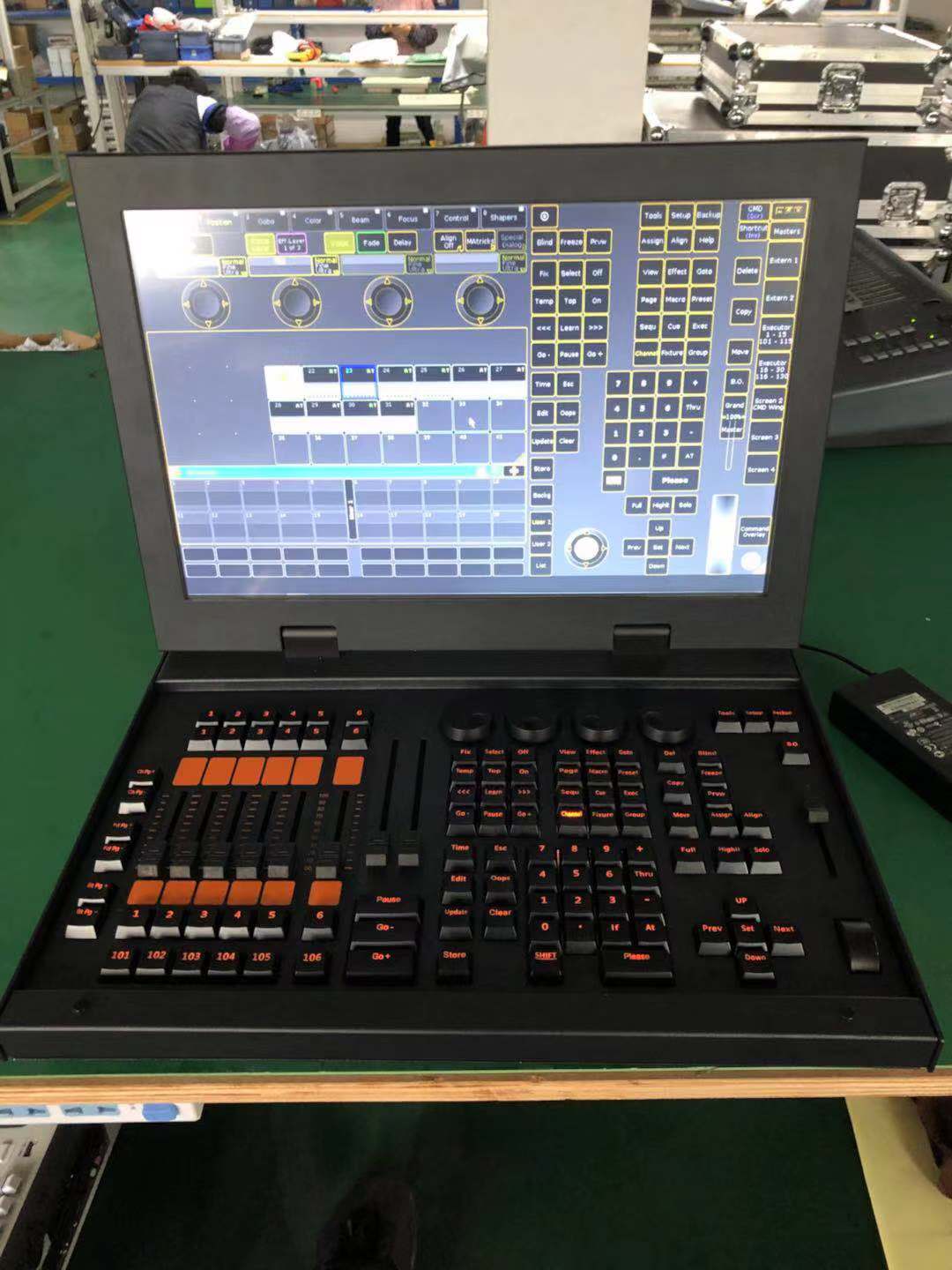
There are various models that differ in functionality, appearance and characteristics of iron. Despite the shortcomings, this device has an amazing balance of mobility and functionality, which the original consoles cannot boast of. For example, it is possible to output 3072 + 512 parameters, incl. through physical exits. The assembly has already been mentioned earlier. With one particular specimen, there were problems such as falling off the touch screen, etc. In general, the stability is poor. There are also fake Command Wing, Fader Wing, and various Net Nodes on the market. In terms of build and stability, like the titan remotes, things are better. There is experience of successful use of the Command Wing.
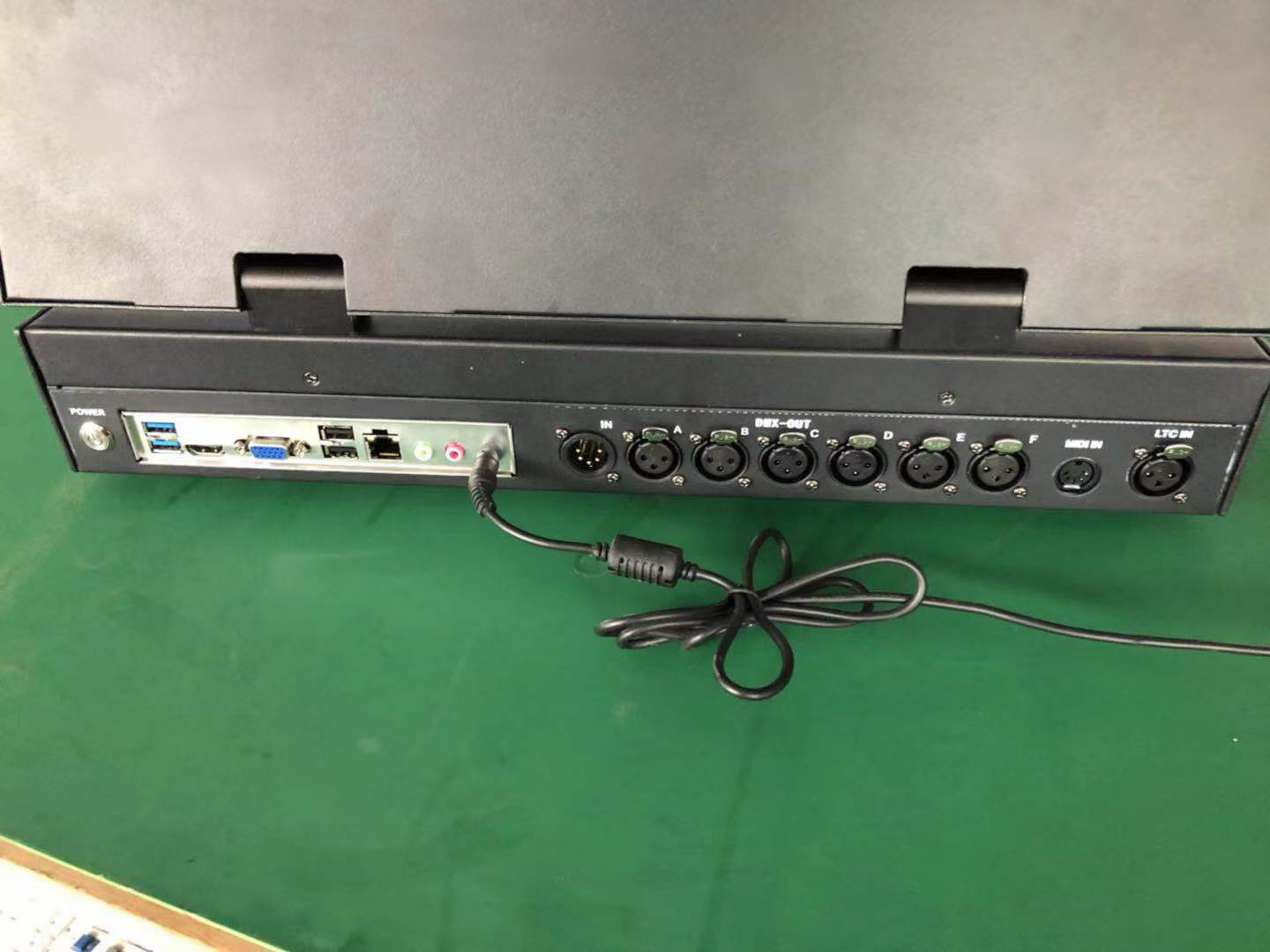
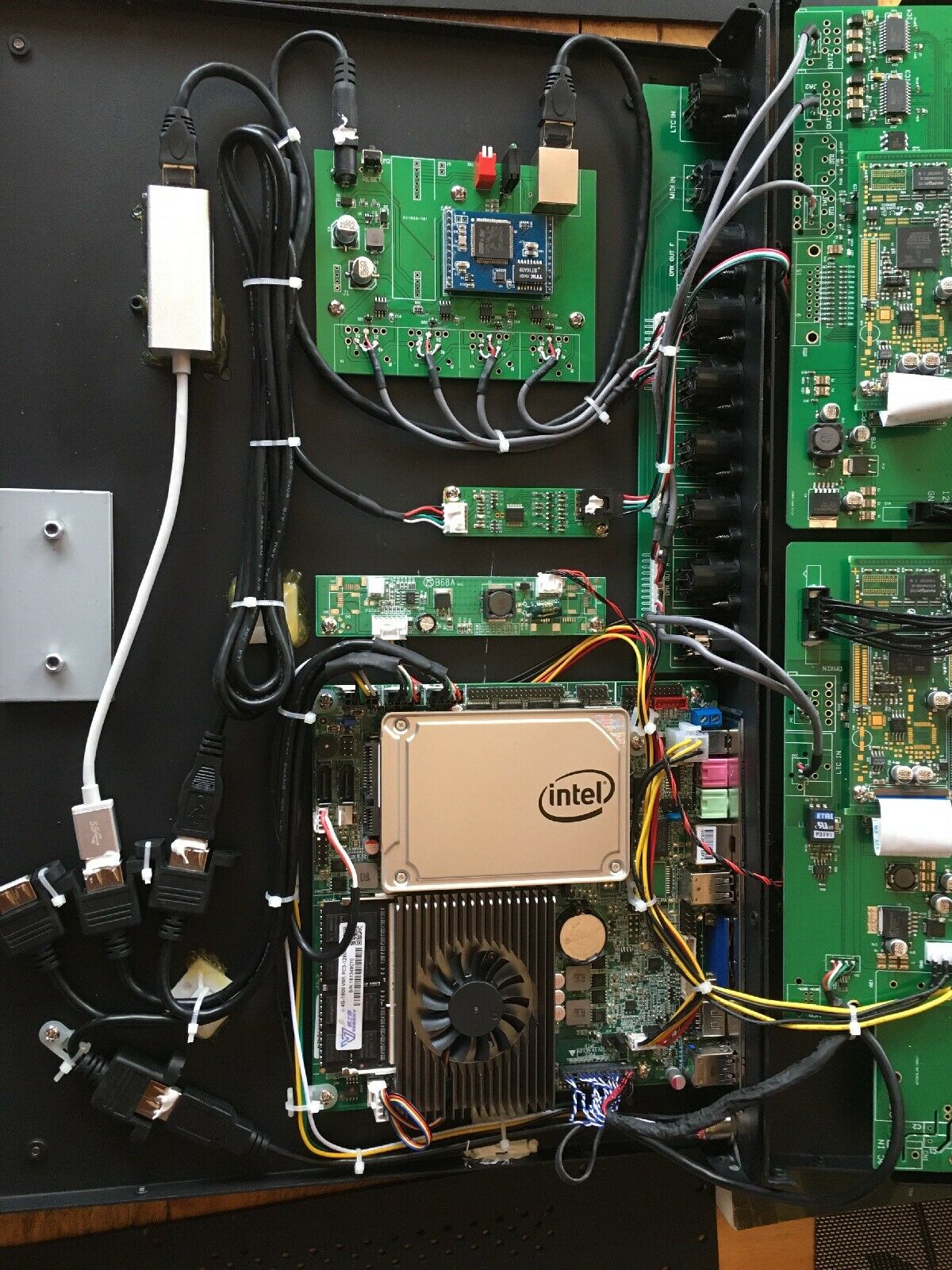

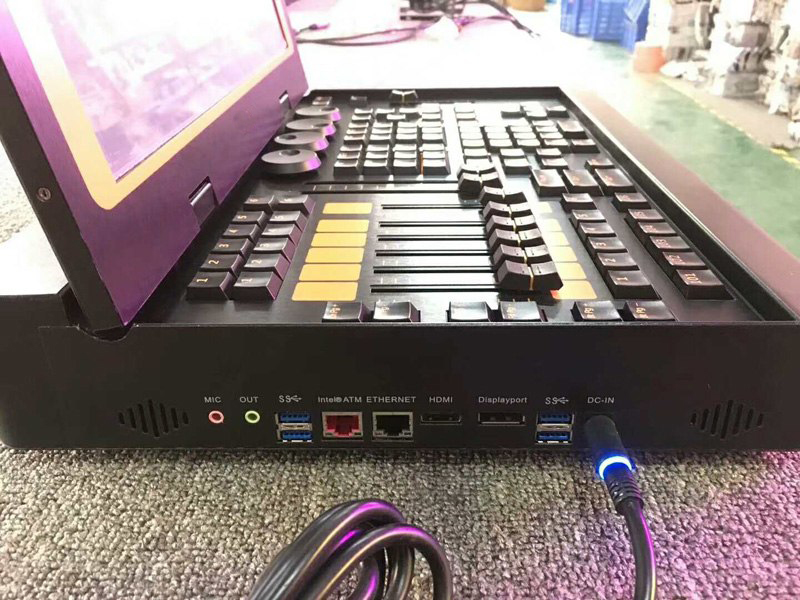
Cryptographic protection of devices and Grand MA software is still much lower than competitors, this allows the Chinese to release copies of devices that fully work with the official software.
As a result, I will express the idea that the use of copies in Russia is possible by those whose finances do not allow purchasing original light control devices. As far as I know, the use of counterfeit products (sale is not meant here) is not regulated in our country, unlike in Europe or the West, where this can be equated with profiting from someone else's intellectual property and entail heavy fines.
Sources:
Wikipedia DMX512
dmx-512.ru
artisticlicence.com